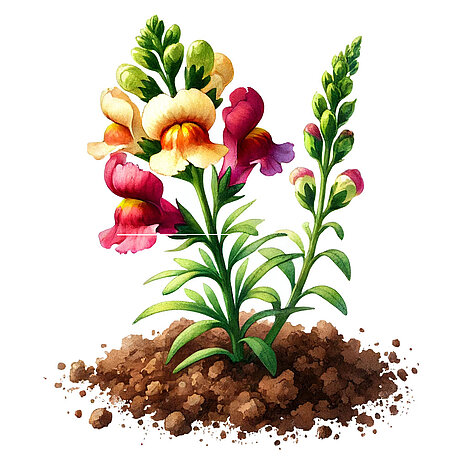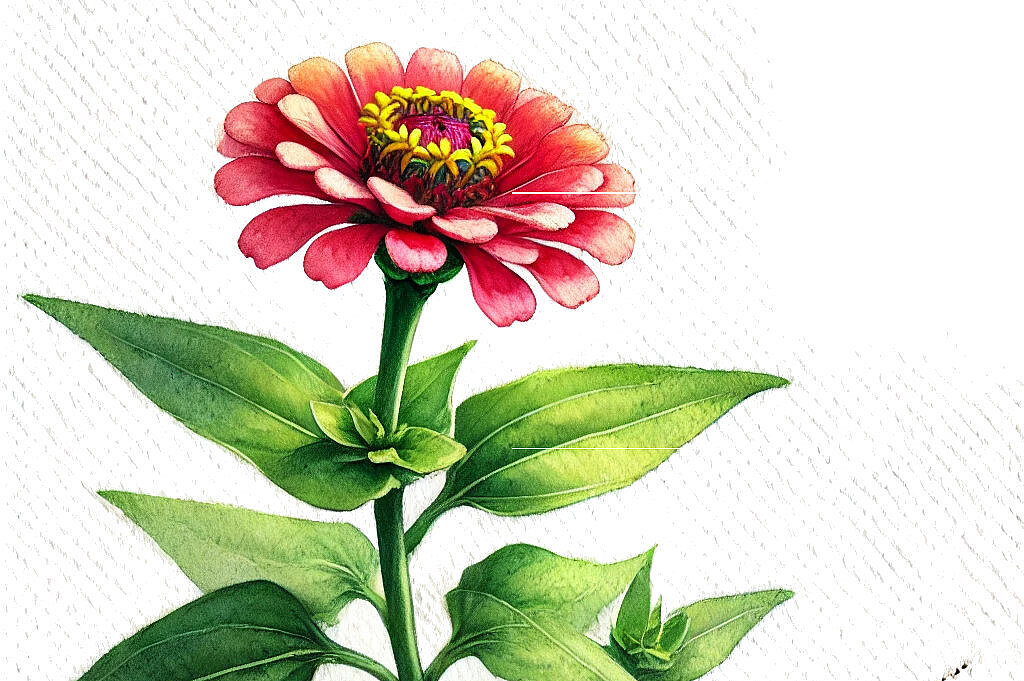Snapdragons

Snapdragons belong to the Plantaginaceae family and come in a variety of colors, from soft pastels to bright primary colors. These plants are popular not only for their appearance, but also for their ability to attract butterflies and other beneficial pollinators. But beyond their beauty and usefulness in the garden, it's crucial to understand how they can impact the health and well-being of our pets.
What are snapdragons?
Snapdragons are a genus of plants known for their flowering stems, which unfurl into a profusion of colors throughout the season. The flowers have a characteristic shape that resembles the open mouth of a lion when lightly pressed, from which their name is derived. Snapdragons bloom from spring to fall, making them an excellent choice for long-blooming garden displays.
Benefits of snapdragons in gardens with dogs
Non-toxic to dogs
One of the most important features of snapdragons is that they are generally considered non-toxic to dogs. This means that the occasional curiosity or consumption of this plant should not cause any serious health problems for pets.
Attracting pollinators
By attracting butterflies and bees, snapdragons contribute to a healthy ecosystem in your garden. This is not only beneficial for plant diversity, but also provides a fascinating viewing opportunity for pets.
Aesthetic value
Snapdragons enhance the garden with their variety of colors and textural beauty, creating a pleasant environment for both humans and animals.
Disadvantages and precautions
Potential gastrointestinal irritation
Although snapdragons are not considered poisonous, they can cause mild gastrointestinal irritation in some dogs if eaten in large quantities. Symptoms may include mild nausea or diarrhea.
Allergic reactions
Some dogs may be sensitive to certain plants or pollens. It is important to watch for signs of an allergic reaction, such as excessive scratching or skin irritation, especially in dogs prone to allergies.
Risk of misinterpretation
While snapdragons are safe for dogs, it's important for dog owners to be aware that not all garden plants are so harmless. Assuming that all plants are safe can lead to dangerous situations when dogs have access to plants that are actually poisonous.
Snapdragons are a colorful and safe addition to gardens where dogs live and play. Their non-toxicity offers a measure of peace of mind for pet owners concerned about the health of their four-legged friends. Nevertheless, it is advisable to minimize the consumption of snapdragons or other plants by dogs to avoid possible gastrointestinal irritation or allergic reactions. Ultimately, snapdragons can be a wonderful way to enhance the beauty of your garden without jeopardizing the safety of your pets. However, as with any change in your dog's environment, it's always a good idea to keep a watchful eye on how they react to new plants.
If you notice any signs of hypersensitivity or poisoning in your dog, you should see your vet immediately. We are not a substitute for a vet, but we try to be as accurate as possible. Every dog reacts differently and we recommend you get a second opinion or consult your vet if in doubt.
Stay healthy and take good care of your four-legged friend!😊
Similar to Snapdragons
Petunias are among the most popular flowers for summer beds, balcony boxes and hanging baskets. They originate from South America and belong to the nightshade family (Solanaceae), which also...
Verbena, also known as verbena, is a genus of plants that is native to various parts of the world and is prized for its healing properties. It has been used in folk medicine for centuries to treat a...
Zinnias belong to the Asteraceae family and are known for their vibrant colors and variety of flower shapes. Originally from Mexico, they have established themselves as popular ornamental plants in...



